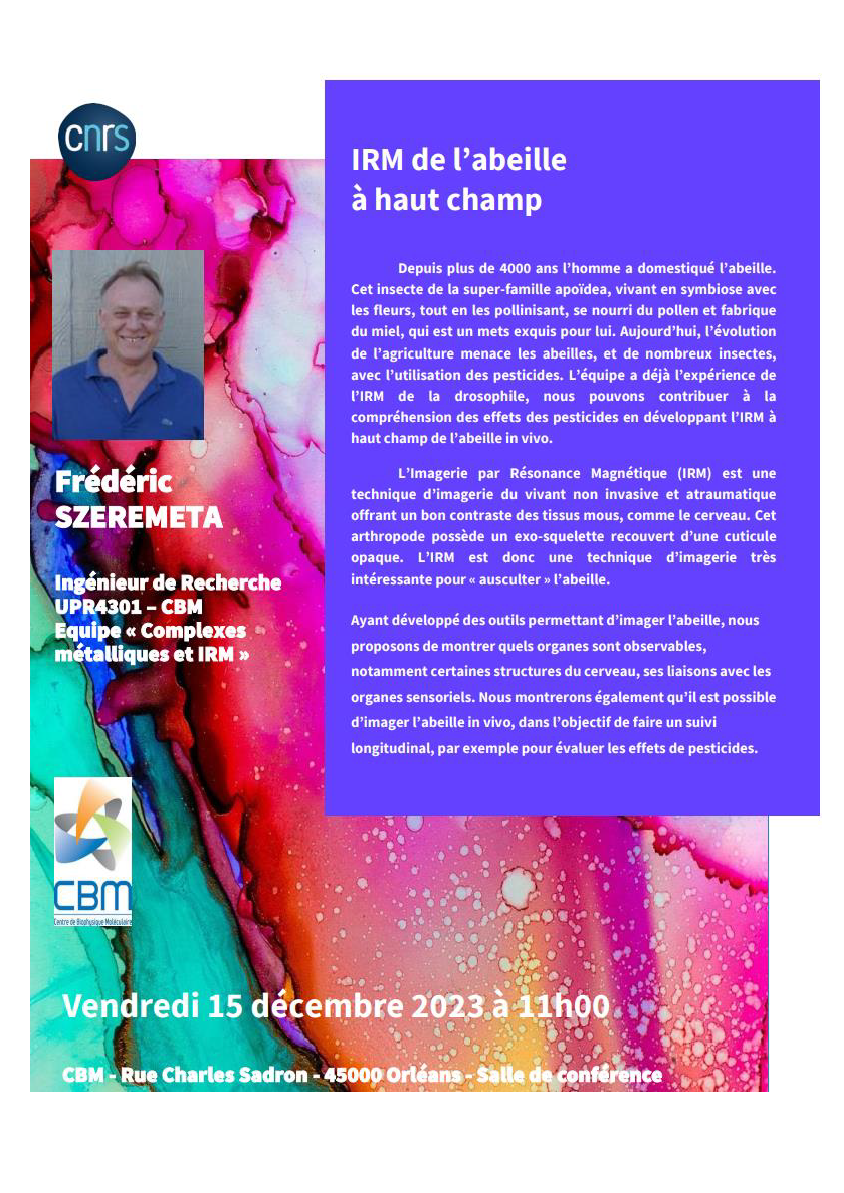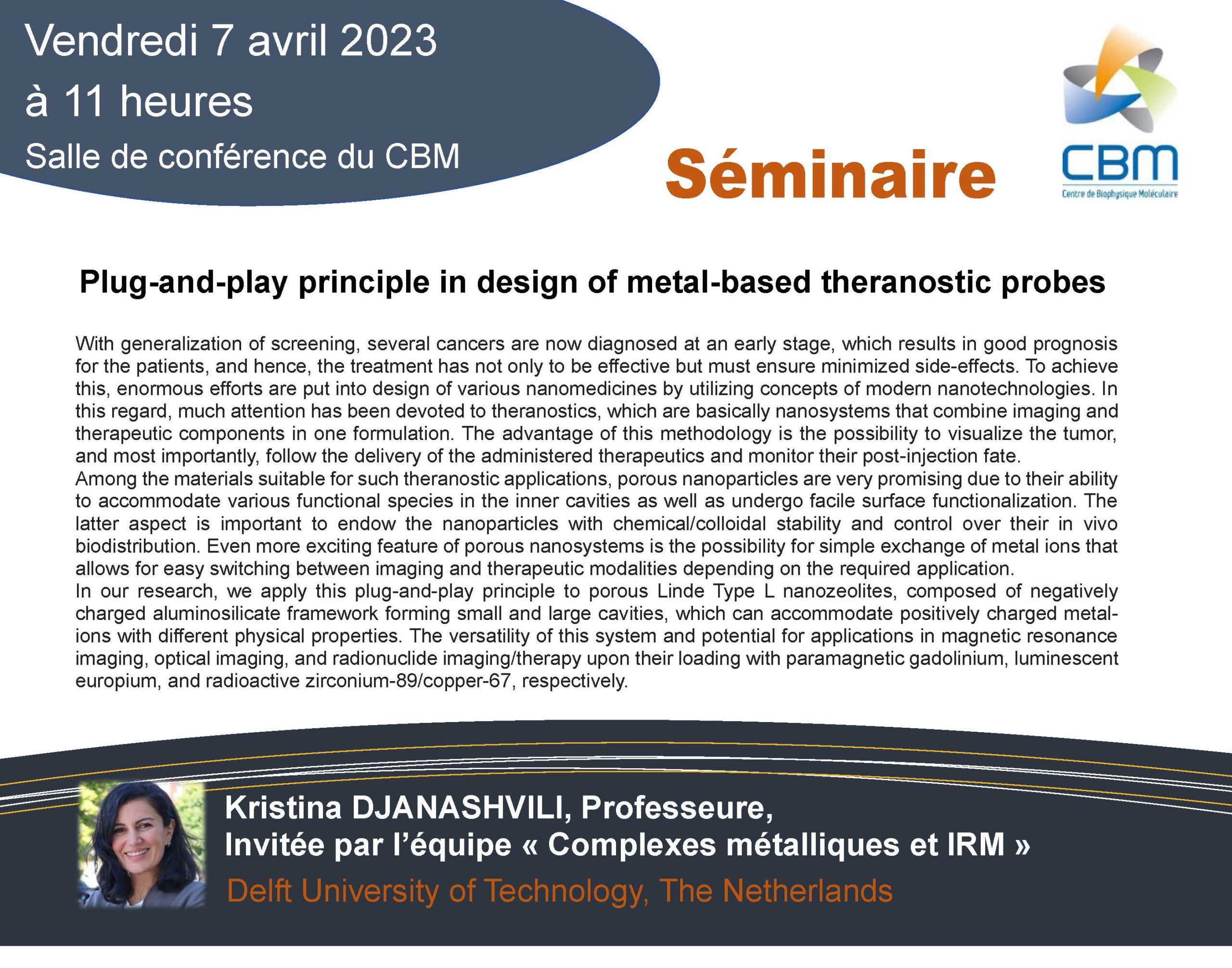Typologie d'actualités: Group Metal complexes and MRI
Enzymatic detection in near infrared optical imaging and MRI with a single ligand complexed to different lanthanide ions

The imaging visualization of active enzymes is of primary importance in biology.
In a collaborative effort between the Centre of Molecular Biophysics (CBM) and the Institute of Chemistry of Natural Substances (ICSN) in Gif sur Yvette, CBM researchers have designed Ln3+ complexes that provide enzyme-mediated changes in NIR luminescence, as well as in Chemical Exchange Saturation Transfer (CEST) and classical T1-weighted MRI, depending on the Ln3+ used. They have demonstrated the successful monitoring of b-galactosidase activity over time in NIR luminescence and CEST MR imaging in phantoms containing the Yb-complex, and in T1 MRI when using the Gd-analogue. A further great advantage of their probe design is its high versatility, as there are a large number of enzymatically cleavable groups that could be attached to the same core, thus creating probes for other important enzyme targets.
Reference : Rémy Jouclas, Sophie Laine, Svetlana V. Eliseeva, Jérémie Mandel, Frédéric Szeremeta, Pascal Retailleau, Jiefang He, Jean-Francois Gallard, Agnès Pallier, Célia S. Bonnet, Stéphane Petoud, Philippe Durand, Éva Tóth
Lanthanide-Based Probes for Imaging Detection of Enzyme Activities by NIR Luminescence, T1- and ParaCEST MRI
Angew. Chem. Int. Ed. 2024, https://onlinelibrary.wiley.com/doi/10.1002/anie.202317728
Marie Curie Postdoctoral Fellowships
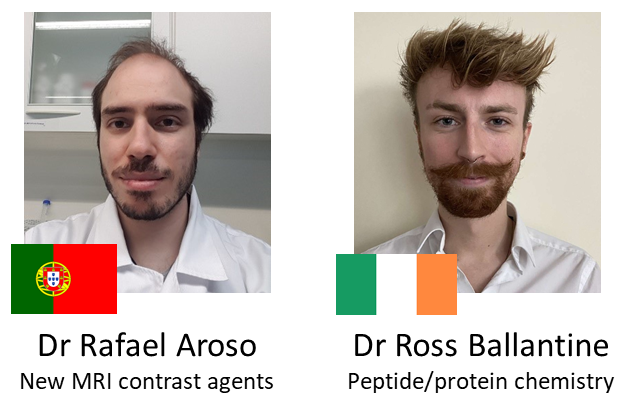
Rafael Aroso, from the University of Coimbra, Portugal, will join the “Metal Complexes and MRI” team. Its “PorphIRON” project aims to develop paramagnetic complexes based on transition metals, such as iron, for MRI applications. This work is part of the team's efforts to replace gadolinium, currently used in MRI, with more biocompatible and ecologically more sustainable metals.
Ross Ballantine, from Queen's University Belfast in Northern Ireland, will join the "Synthetic Proteins and Bioorthogonal Chemistry" team to work on the « ThioSHowcase » project. This project aims to explore arylthiol-based amino acids for the chemoselective functionalisation of peptides and of proteins, with applications in protein labeling and selective peptide cross-linking.
New imaging probe enables MRI detection of early-stage breast cancer tumors
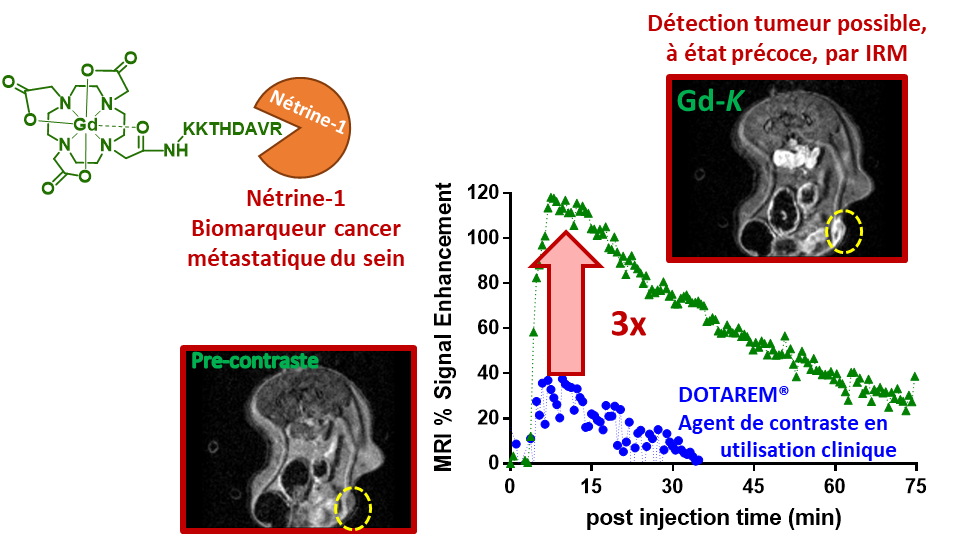
Despite significant progress in cancer imaging and treatment over the years; early diagnosis, metastasis detection, and a better understanding of cancer progression remain an unmet clinical need. Molecular imaging can fulfil this need, but requires the design of contrast agents which target specific tumor biomarkers. Netrin-1 is an extracellular protein overexpressed in metastatic breast, and it is implicated in tumor progression, angiogenesis and appearance of metastasis and tumor aggressivity.
Reserachers of the team "Metal complexes and MRI", develop and validated in vivo the first Netrin-1 specific peptide-based multimodal probe. A structural validation was performed by molecular docking, thanks to a collaboration CBM and Institute of Organic and Analytical Chemistry.
This probe enabled successful triple-negative metastatic breast tumor visualization namely at early development stage (tumor volume 0-50 mm3), by magnetic resonance imaging (MRI). Such peptide-based probes are molecular platforms allowing imaging by MRI or single photon emission tomography. This bimodal approach makes it possible to scan a wide range of target concentrations (nM to μM), enabling in vivo mapping of Netrin-1 in cancer murine models, at different tumor evolution stages.
References:
Clémentine Moreau, Tea Lukačević, Agnès Pallier, Julien Sobilo, Samia Aci-Sèche, Norbert Garnier, Sandra Même, Éva Tóth and Sara LacerdaPeptide-Conjugated MRI Probe Targeted to Netrin-1, a Novel Metastatic Breast Cancer Biomarker
Bioconjugate Chem. https://doi.org/10.1021/acs.bioconjchem.3c00558
Research on glioma (brain tumor) carried out at the CBM highlighted by CNRS Chimie
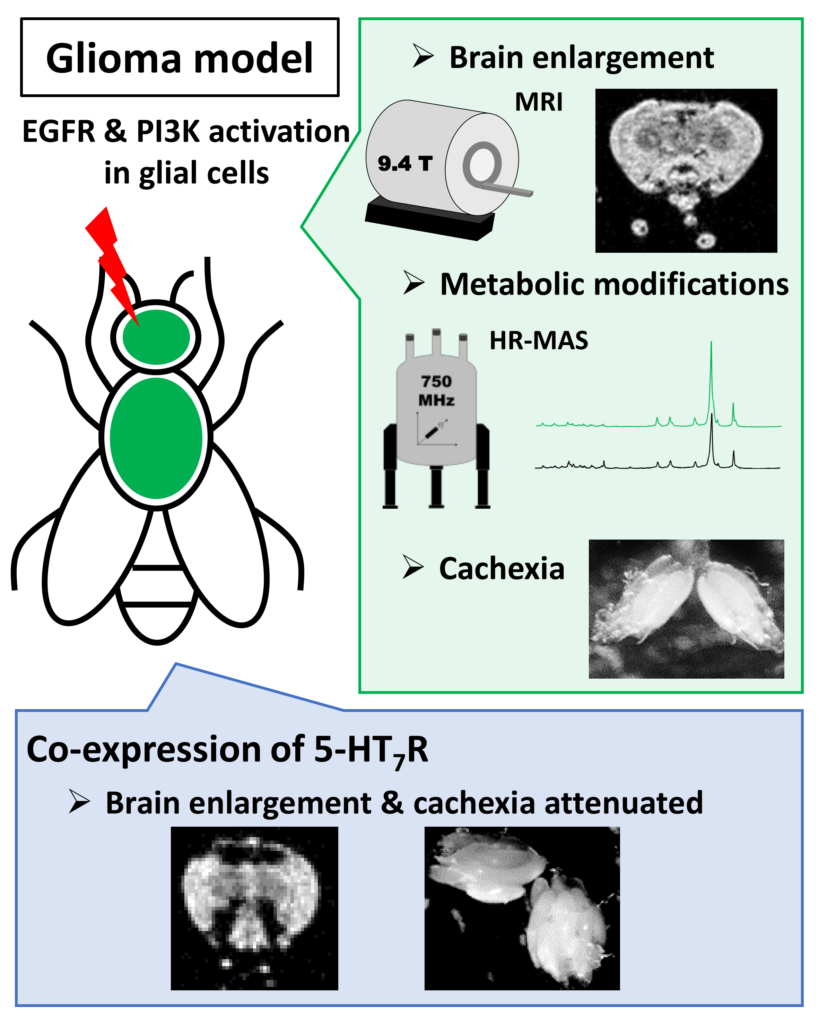
The use of different original NMR methods (MRI, 1H HR-MAS, 2D liquid NMR) made it possible to characterize a glioma model established in adult Drosophila and to reveal the therapeutic potential of a serotonin receptor for the treatment of these cancers.
Read the "Actualité chimique" article n° 492, 2024, February
Gliomas account for 50% of brain cancers and therefore constitute the most common brain tumors. Molecular alterations involved in adult gliomas have been identified and mainly affect tyrosine kinase receptors with amplification and/or mutation of the epidermal growth factor receptor (EGFR) and its associated signaling pathways. Several targeted therapies have been developed but current treatments remain ineffective for glioblastomas, the most severe forms. Thus, it is a priority to identify new pharmacological targets. Here, we used a Drosophila glioma model in adult, to characterize metabolic disturbances associated with glioma and assess the consequences of the serotonin 5-HT7 receptor expression on glioma development. First, by using in vivo Magnetic Resonance Imaging, we have shown that expression of the constitutively active forms of EGFR and PI3K in adult glial cells induced enlargement of brains. Then, we explored altered cellular metabolism by using High-Resolution Magic Angle Spinning NMR and 1H-13C Heteronuclear Single Quantum Coherence solution state. Discriminant metabolites identified highlight rewiring of metabolic pathways in glioma, and associated cachexia phenotypes. Finally, the expression of 5-HT7R in this model attenuates phenotypes associated with glioma development (brain enlargement and cachexia).
Article :
An adult Drosophila glioma model to highlight metabolic dysfunctions and evaluate the role of the serotonin 5-HT7 receptor as a potential therapeutic target.
Bertrand M, Szeremeta F, Hervouet‐Coste N, Sarou-Kanian V, Landon C, Morisset-Lopez S, Decoville M
The FASEB Journal. 2023 37:e23230. doi:10.1096/fj.202300783RR
2023.12.15 – Seminar of Frédéric SZEREMETA

Seminar of Dr Kristina DJANASHVILI – 2023, April 7




